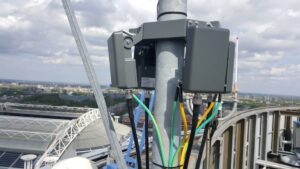DroneStars Aids in Groundbreaking Forensic Research for Detecting Bones and Bone Fragments

DroneStars Aids in Groundbreaking Forensic Research for Detecting Bones and Bone Fragments
Tristan Krap, an anthropologist at MUMC, posed a question to the police regarding their interest in a specific aspect of forensic research related to detecting bones and bone fragments.
The query received by Dronestars from MUMC and the police was whether a drone could be significant in this new method for locating bones and bone fragments.
From this question, a project group of experts was formed, consisting of Niels van den Broek from the Police (forensic investigation), Tristan Krap from MUMC (anthropologist), Frans Govers from the police (drone innovator), Adeline van den Berg from the Police (drone policy officer), and Dino van Essen from Dronestars (drone technical expert).
The first tests were conducted in a dark, enclosed warehouse, where with minimal resources, it quickly became apparent that this project could feasibly be used outdoors. Based on the results of these tests, the Police approached Innovation Court to request a budget for further and more in-depth research and to conduct more tests.
With the budget secured from Innovation Court, a custom-built drone was equipped with a forensic light source (Crime-lite82s 420-470 blue) and a long-pass filter. Using this drone, we examined whether it was possible to make human and animal bone material visible from the air (from a height of 10 meters). We compared searches conducted by people in a line formation to searches using the specially assembled drone for these bone materials. The drone quickly found all bone fragments (28 out of 28), while the police officers on foot found only a few (4 out of 28). What a fantastic result! An important detail is that the crime scene remained pristinely intact with the drone flying at 10 meters, unlike when police officers walk in a line.
The next step will be to investigate whether other biological traces can also be highlighted effectively in this way. Blood, saliva, and semen traces are common traces that the Police are eager to take to the next level in their investigation.
It is also worth mentioning that the project group will be expanded to include NVWA and Defense, represented by Laurens Craanen and Rob Broekman, who have become very enthusiastic about the research results.
Attached, you will find a short video of the tests that were conducted.
More blogs
About Dronestars
Analysis, advice, drones, training, manuals, inspections, software, implementation support DroneStars offers it all. This is how we fulfill our mission to safely integrate drones into business services, industry, and government. We aim to contribute to our clients’ success.



